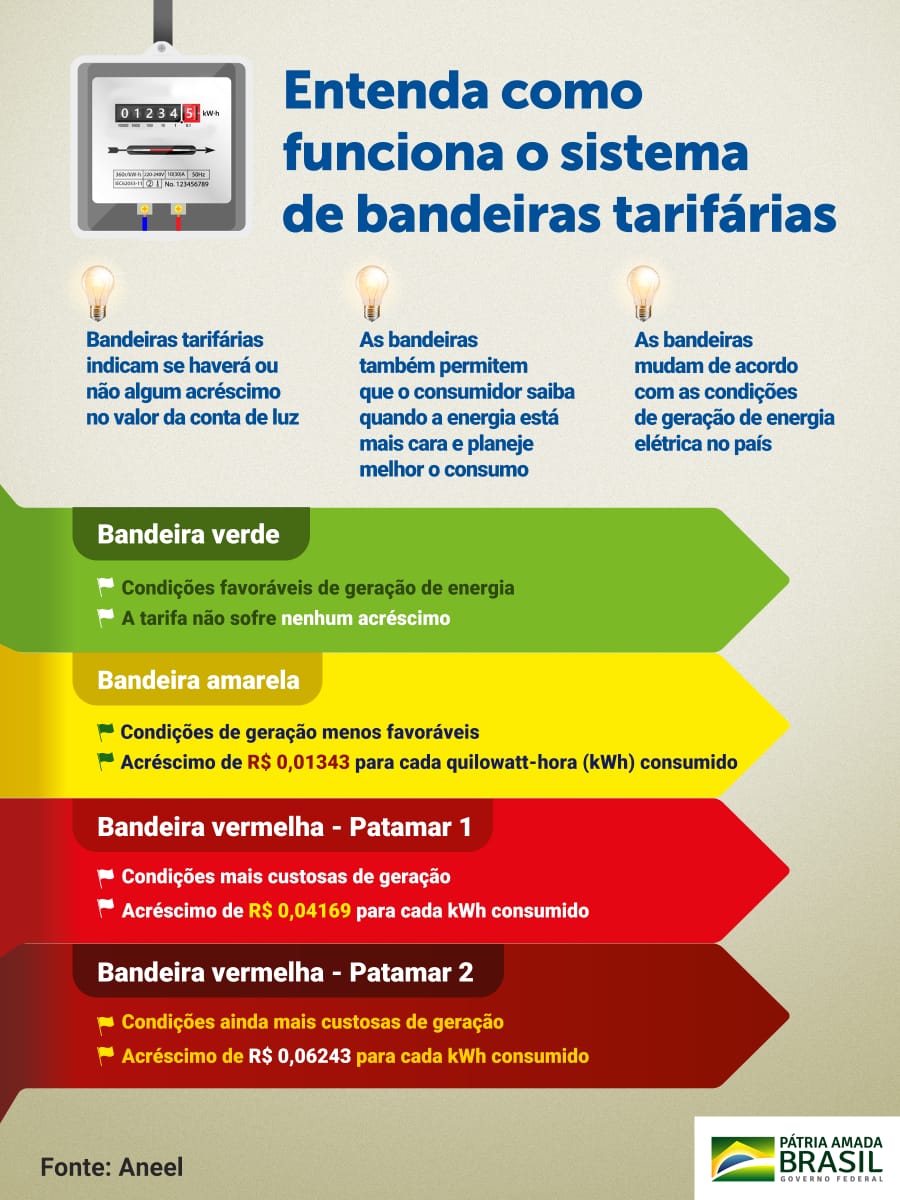ELECTRICITY
Since 2015, electricity bills have started to consider the tariff flag system, consisting of green, yellow and red flags, with the red flag having levels 1 and 2. These colors indicate whether or not there will be an increase in the amount to be passed on to the consumer end depending on the power generation conditions.
Flags were the theme of the eighth episode of AneelCast, the podcast of the National Electric Energy Agency (Aneel), which brings information, opinions and debates on the topics highlighted at the institution. Each episode addresses a topic relevant to the electricity sector.
Currently, Brazil is in an atypical period of decreasing water availability. With less water in the hydroelectric reservoirs, the thermoelectric plants are activated, generating a higher energy cost.
“Depending on the type of plants used to generate energy and meet the country's demand, the costs of this generation can be higher or lower. In hydroelectric plants, the energy generated with water has a lower cost. In the thermal plants, we have to pay for the fuel”, explained the general director of Aneel, André Pepitone.
Transparency
According to Pepitone, Aneel understands that consumers must have access to transparent and accurate information about the real cost of energy generation in the country. The banners indicate, month by month, the cost that will be charged to consumers.
“The flags are not an extra fee. Consumers have always paid for the activation of thermoelectric plants. The difference is that, before 2015, this cost came later and with interest, when the distributors' tariffs were readjusted, to reflect the greater activation of thermoelectric plants and their fuels”, he explained.
The functioning of the tariff flag system is “as intuitive as traffic signals”, in the words of Pepitone. The green, yellow and red colors indicate whether the electricity bill will be more or less cheap depending on the generation conditions. With the banners, charging is transparent and the consumer has information to use energy more consciously.
“The banners allow the consumer to plan and have a more conscious consumption. Before, the consumer did not know that energy was more expensive. Now he knows and can program himself. If the flag is red, he knows it's convenient to save and avoid waste. The flag helps to remember when water and energy are at their most scarce. It's transparency and respect for consumers and citizens," added the director.
.

 Mr. Alessandro Jacob speaking about Brazilian Law on "International Bar Association" conference
Mr. Alessandro Jacob speaking about Brazilian Law on "International Bar Association" conference